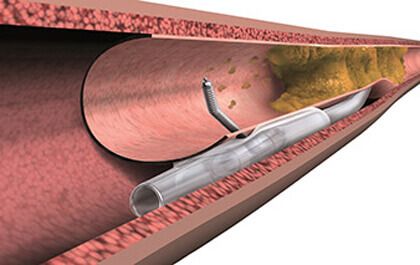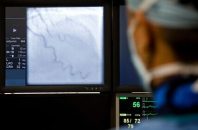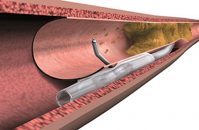Roughly 20% or coronary angiographies show some form of chronic total occlusion (CTO), and this figure is twice as high for diabetic patients or those with cardiac failure and reduced ejection fraction (EF). CTO percutaneous intervention (PCI) has experienced a significant growth thanks to the development of new techniques and dedicated material. However, a considerable…
Should We Treat Obstructive Coronary Artery Disease in TAVI?
Coronary artery disease, both obstructive and non-obstructive, often coexists with significant aortic stenosis. Therapeutic decision-making in this scenario remains controversial, not only regarding the need for treatment, but also about when it should be addressed, considering its pros and cons. Various analyses have yielded contradictory data, as most lesions are chronic and stable. Currently, the…
Events According to Revascularization Modality in the ISCHEMIA Trial
The main studies carried out on patients with chronic coronary syndromes (CCS), such as the MASS II, COURAGE, BARI 2D and FAME-2, failed to show benefits in terms of mortality with the invasive approach. The ISCHEMIA, a large randomized study including patients with moderate to severe ischemia, with without left main disease and with acceptable…
Coronary Artery Disease in TAVR: Unsolved Dilemma
Aortic stenosis shares risk factors with coronary artery disease (CAD), and its prevalence varies according to age, reaching approximately 50% or more in some registries. Deciding when to treat and the need for percutaneous intervention presents a challenge. It has been established that epicardial stenosis at proximal level, or the medial segment, requires intervention, especially…
Clopidogrel Monotherapy Beyond 12 months: Long Term Analysis of the STOPDAPT-2
Short dual antiplatelet therapy (DAPT) has shown benefits in patients receiving drug eluting stents (DES), reducing bleeding with no concomitant increase in major adverse cardiovascular events (MACE). Traditionally, the therapeutic window was limited to monotherapy with P2Y12 inhibitors during the first year and there are few data on short DAPT followed by long term monotherapy…
Relationship of Radial Wall Strain with Functional and Morphological Assessment of Coronary Artery Lesions
Radial wall strain (RWS) has been recently linked with plaque vulnerability and has been identified as a predictor of lesion progression and clinical outcomes. However, RWS should be assessed together with physiological indices and plaque characteristics. The aim of this post hoc analysis of the CCTA-FFR registry was to look into the link between RWS…
Use of Intravascular Lithotripsy vs. Rotational Atherectomy for Severely Calcified Coronary Lesions
Severely calcified coronary stenosis poses a significant challenge for coronary angioplasty procedures. Modifying plaque before stenting is crucial to a successful intervention, since it will prevent the sub expansion associated to worse clinical outcomes at followup. The tools employed to assess complex lesions include specialized balloons such as cutting, scoring, or high pressure balloons, as…
LIFE-BTK | Critical Limb Ischemia: Use of Bioresorbable Scaffold in Infrapatellar Lesions (LIFE-BTK)
Advanced stages of peripheral artery disease cause significant limitations in patients, such as critical limb ischemia (CLI), which manifests with resting pain and gangrene or ulcers of difficult resolution. Uncontrolled progression of this pathology might lead to major amputation, reduced life expectancy and increased healthcare costs. Prior research on infrapopliteal territory have shown contradicting results.…
Long-term Results of Coronary Bifurcation Lesion Treatment in Diabetic Patients
The effects of diabetes on patients with coronary artery disease are well-known, and their outcomes after angioplasty are less favorable, with a higher rate of restenosis, recurrent acute myocardial infarction, and stent thrombosis. Despite advances in drug-eluting stents and procedural techniques, the treatment of coronary bifurcation lesions in diabetic patients shows less positive clinical outcomes…
Use of IVUS in Complex PCI: Results according to Operator Experience
The use of ultravascular ultrasound (IVUS) to guide coronary angioplasty procedures (PCI) has been shown to reduce the risk of major adverse events in numerous randomized controlled studies, registries and meta-analysis. The current guidelines recommend the use of IVUS in left main disease and complex lesions. The proportion of complex PCI procedures has increased over…
Dissection and Re-Entry Technique in Chronic Total Occlusions: Data from the PROGRESS-CTO Registry
The antegrade dissection and re-entry (ADR) technique is considered essential for the management of chronic total occlusions (CTO). It serves as the primary option in some protocols for complex and extensive lesions or as a backup strategy in case of failure with other initial strategies. Dissection techniques include guided methods such as scratch and go,…










